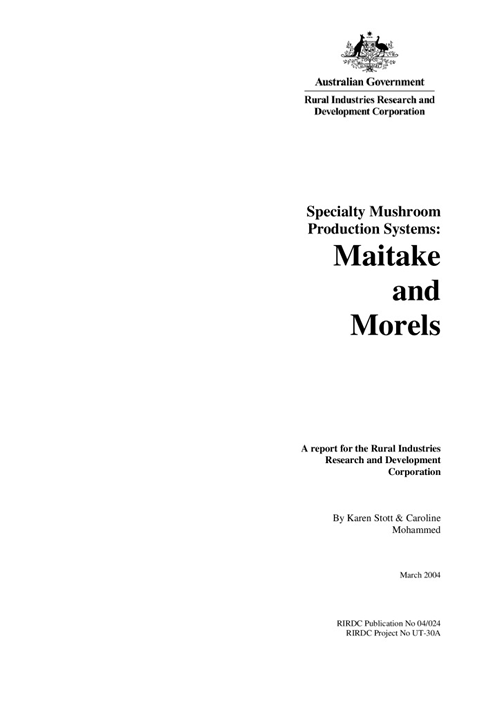Impact case study: Hazelnut investments give confidence to new growers
Australia’s peak hazelnut industry body says the number of growers in Australia is steadily increasing, as ongoing research and development efforts give potential new entrants...

95 pages
Published: 1 Mar 2004
Author(s): Stott, Karen, Mohammed, Caroline Mohammed
Download report PDF
DownloadPurchase a hard copy - AUD $55.00
Internationally there is increasing demand for both European and Asian specialty mushrooms. In
particular: Maitake, a quality edible and medicinal fungi, and Morel, a fungal delicacy which is
currently wild harvested. Australia is well placed to enter the market and meet demand due to its
proximity to Asian markets, its multi-cultural heritage and export links with USA, Europe and Asia.
Both Maitake and Morel provide opportunities for new entrants to the national mushroom growing
industry.
Maitake research focussed on (i) developing a technique for the cultivation of maitake based on the
Japanese bag method of cultivation; (ii) determining levels of substrate additive which enhance
efficient substrate colonisation and primordia initiation; (iii) identifying maitake isolates with the best
commercial potential; (iv) providing the industry with a commercially viable maitake production
system.
Morel research focussed on (i) providing the industry with a wide range of Tasmanian Morel isolates;
(ii) identifying Tasmanian isolates to species level; (iii) investigating triggers for sclerotia production;
(iv) comparing the production of sclerotia by Tasmanian isolates with overseas reference isolates; (v)
selecting Tasmanian isolates which produce the largest sclerotia for further research.
Building on the successful R&D outcomes from RIRDC projects DAT-30A (The development of
commercially viable culturing and fruiting systems for some Asian specialty mushrooms) and UT-12A
(Preliminary investigation on “French” black morel cropping) this project identified suitable Maitake
isolates for commercialisation, determined additives to ameliorate eucalypt sawdust for substrate, and
trialed a production technique. A large collection of Morel isolates was obtained and preliminary
studies on their ability to produce sclerotia, a precursor to fruit body production, were completed.
Extensive literature reviews about Maitake and Morels summarise both published and anecdotal
information.
This project was funded from RIRDC Core Funds which are provided by the Australian Government.
Funding was also provided by HAL and industry partner Huon Valley Mushrooms.
This report, a new addition to RIRDC’s diverse range of over 1000 research publications, forms part
of our Asian Foods R&D Program, which encourages development of a viable industry in Australia.
Most of our publications are available for viewing, downloading or purchasing online through our
website:
?? downloads at www.rirdc.gov.au/fullreports/index.htm
?? purchases at www.rirdc.gov.au/eshop
Simon Hearn
Managing Director
Rural Industries Research and Development Corporation